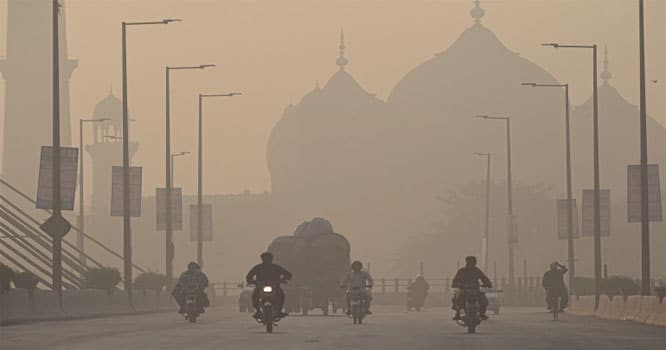

[ad_1]
LAHORE: Lahore’s annual smog crisis has returned, with the Air Quality Index (AQI) soaring to an unhealthy level of 156. The city is once again enveloped in a toxic mix of smoke and fog, reducing visibility and posing serious health risks to its residents.
People with respiratory conditions, the elderly, and children are particularly vulnerable, and complaints of coughing, breathing difficulties, and burning eyes have surged since October.
The Environmental Protection Department attributes the smog to a combination of factors, including vehicular emissions, industrial activities, and the seasonal burning of crop stubble in neighboring areas.
Despite efforts by the Punjab government to curb smog, including demolishing over 600 brick kilns and sealing more than 200 factories, the problem persists.
The situation worsens during the winter months due to cooler temperatures and humidity trapping pollutants close to the ground. Experts argue that existing measures are insufficient to combat the growing air pollution crisis, citing weak enforcement of court orders banning harmful practices like crop residue burning.
To effectively tackle the issue, experts recommend stricter implementation of laws and regulations, empowering local bodies to curb emissions, and introducing comprehensive automobile legislation.
The government must also promote sustainable practices, such as tree planting and green initiatives, to mitigate the impact of smog on Lahore’s residents.
The health risks associated with smog are alarming, and immediate action is necessary to protect the city’s inhabitants. Health experts advise limiting outdoor activities, wearing masks, and using air purifiers indoors to mitigate the effects of polluted air.
[ad_2]
Source link
